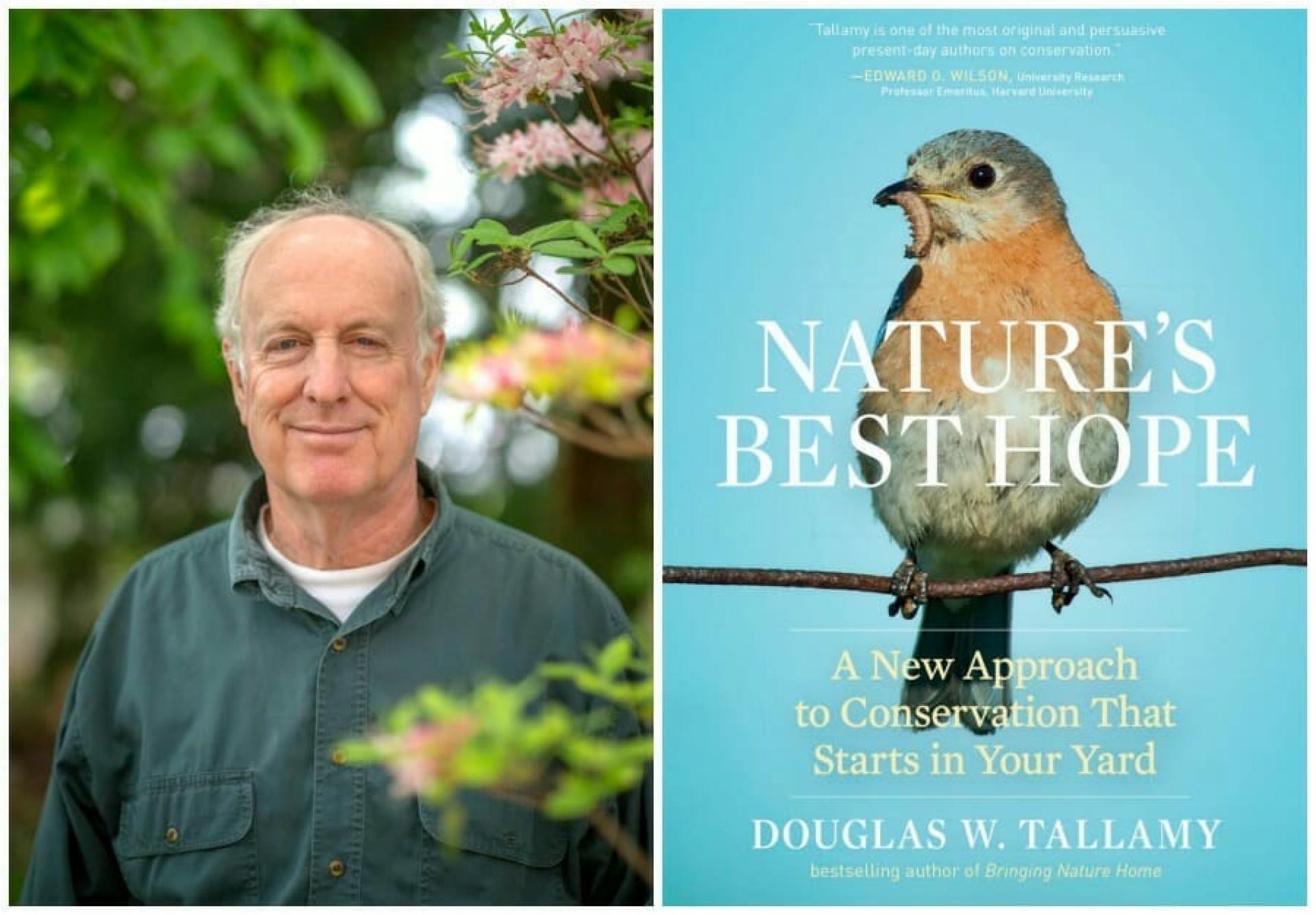You are here
Be A Better Gardener: Meet Dr. Douglas Tallamy
Be A Better Gardener: Meet Dr. Douglas Tallamy
By Thomas Christopher
Like many gardeners who want to do right by nature, I have drawn great inspiration from the work of Douglas Tallamy. Dr. Tallamy is an insect ecologist at the University of Delaware. More than 20 years ago, when he moved to his current home on 10 acres of a former hay field in southeastern Pennsylvania, he found the property over-run with invasive, exotic plants such as autumn olive and oriental bittersweet. These did not support significant populations of native insects, especially the moths and butterflies whose caterpillars serve as food for the chicks of most songbirds. The equation is simple: no caterpillars equals very few birds. This was just the most visible sign of a general poverty of wildlife, as many other creatures also depend on insects as food.
Dr. Tallamy began removing the plants of foreign origin and replacing them with native plants that he knew supported lots of caterpillars, such as oaks. As the native plants grew up, caterpillars began to return. In a white oak that he planted, for example, he has since found 242 different species of caterpillars. The wealth of caterpillars and other native insects has lured an influx of native birds. Tallamy has observed 59 species of birds breeding on his landscape since he started replanting, which is 38 percent of all the terrestrial birds that breed in Pennsylvania.
He began reporting his observations in scientific journals, and in 2009 in a best-selling book, Bringing Nature Home. He has followed up with The Living Landscape, a manual of garden design with native plants co-authored with horticulturist Rick Darke, and two more best-selling books, Nature’s Best Hope (2020), and The Nature of Oaks (2021). This past spring he added another volume, for young readers, an edition of Nature’s Best Hope rewritten with the assistance of Sarah L. Thomson.
Initially, Dr. Tallamy told me, he resisted when his publisher proposed this project. Given the perilous state of our national environment, he replied that we don’t have time to wait for the young readers to grow up and move into positions where they can influence policy. Then, however, he recognized that inspiring children could lead to them enlisting their parents in nature’s cause.
The heart of the new young reader’s edition of Nature’s Best Hope is the same as that of the adult book from which it was derived. By Tallamy’s calculation, there simply is not enough publicly owned, preserved habitat to support functional ecosystems in the continental United States. This is especially true east of the Mississippi, where private ownership is overwhelmingly the rule. In the state where I garden, for example, only 6.3 percent of the land is publicly owned, and less than 1 percent is preserved as a national park. In all, Tallamy points out, “We have turned 54 percent of the lower 48 states into a matrix of cities, suburbs, roads, airports, power and pipelines, shopping centers, golf courses, infrastructure, and isolated habitat fragments, with 41 percent more of the U.S. into various forms of agriculture. That’s right: We humans have taken 95 percent of the natural world and made it unnatural.” In light of this, it’s no wonder that our bird and insect populations are plunging and the number of species threatened with extinction are increasing.
Reversing this situation, Tallamy adds, must come from private citizens who dedicate their landscapes at least partially to native plants and fostering wildlife. If half of the privately owned lawns were converted in this way, the resulting 20 million acre “homegrown national park” would be roughly nine times the size of Yellowstone Park.
I have already registered my woodlot with the Homegrown National Park non-profit organization (homegrownnationalpark.org) that Tallamy cofounded with retired businesswoman and gardener Michelle Alfandari, and posted it to its online interactive map. So far there are 28,484 of us restoring some 2,260,419,453.50 acres. That’s not a bad beginning but we, all of us who love nature, need to get on board. That’s why I’m sending all of my nieces and nephews a copy of the young reader’s edition of Nature’s Best Hope. At $9.99 a copy, it’s an opportunity to get them, and their parents, involved with meeting this generation’s greatest challenge.
Besides, as I can testify, inviting nature back into your landscape is exciting and great fun.
Be-a-Better-Gardener is a community service of Berkshire Botanical Garden, located in Stockbridge, Mass. Its mission, to provide knowledge of gardening and the environment through a diverse range of classes and programs, informs and inspires thousands of students and visitors each year. Thomas Christopher is a volunteer at Berkshire Botanical Garden and is the author or co-author of more than a dozen books, including Nature into Art and The Gardens of Wave Hill (Timber Press, 2019). He is the 2021 Garden Club of America's National Medalist for Literature, a distinction reserved to recognize those who have left a profound and lasting impact on issues that are most important to the GCA. Christopher’s companion broadcast to this column, Growing Greener, streams on WESUFM.org, Pacifica Radio and NPR and is available at berkshirebotanical.org/growinggreener.
Help Our Garden Grow!
Your donation helps us to educate and inspire visitors of all ages on the art and science of gardening and the preservation of our environment.
All donations are 100 percent tax deductible.


